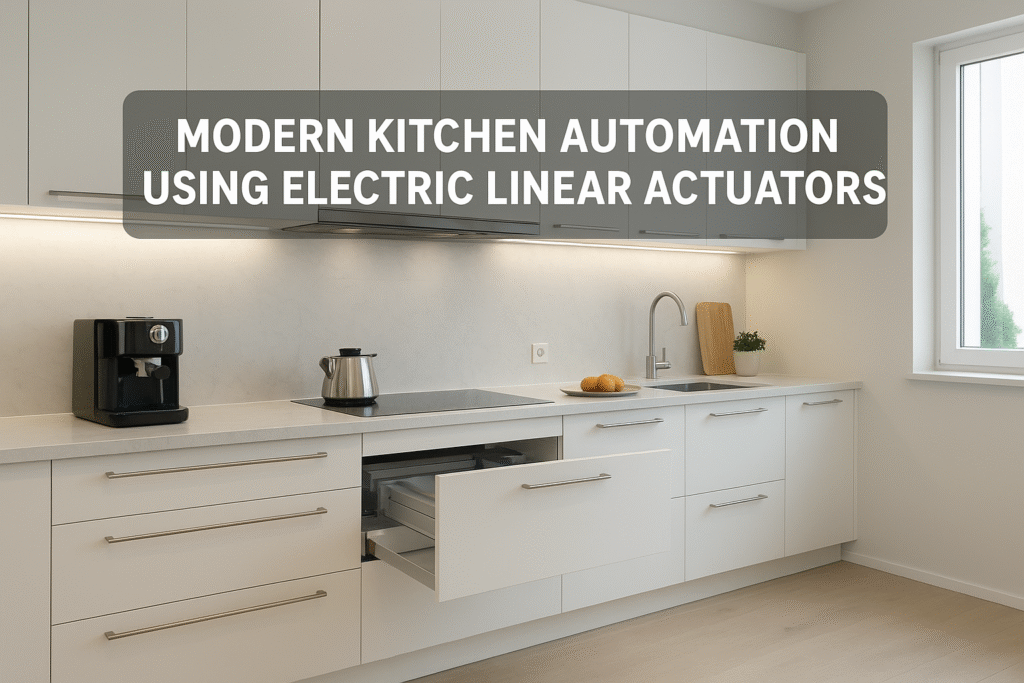The kitchen is the heart of every home, and in today’s fast-paced lifestyle, convenience, safety, and efficiency have become top priorities. From smart appliances to automated cabinets, modern kitchens are evolving rapidly. At the center of this transformation lies an often-overlooked component: the electric linear actuator in modern kitchen.
These compact, efficient, and reliable devices are powering a new wave of kitchen automation—making everyday tasks easier, safer, and more ergonomic.

Why Automate the Kitchen?
A modern kitchen is no longer just about cooking; it’s about smart living. Kitchen automation provides:
- Enhanced convenience – Less bending, reaching, or manual effort.
- Improved accessibility – Easier for elderly and differently-abled users.
- Better space utilization – Smart cabinets and adjustable worktops save space.
- Luxury & style – Seamless movement and hidden mechanisms add elegance.
Applications of Electric Linear Actuators in Modern Kitchen
- Adjustable Kitchen Countertops
- Counters can be raised or lowered at the touch of a button.
- Perfect for wheelchair users or homes with people of different heights.
- Automated Cabinets and Drawers
- Actuators make overhead cabinets move downwards for easy reach.
- Push-button or sensor-based drawers provide effortless access.
- Hidden Appliances
- Coffee machines, blenders, or microwaves can rise out of the counter when needed and retract when not in use.
- Keeps the kitchen clutter-free and stylish.
- Smart Ventilation Systems
- Actuators adjust vent hoods for effective air circulation.
- They can automatically open or close based on cooking activity.
- Dining and Work Tables
- Extendable or height-adjustable dining tables powered by actuators offer multifunctional use.
Benefits of Using Electric Linear Actuators in Kitchens
- Quiet and smooth operation – Ideal for home environments.
- Compact design – Fits into modern slim kitchen structures.
- Low maintenance – Unlike hydraulics, no risk of leaks.
- Safety features – Can integrate sensors to avoid accidental pinching or overload.
- Energy efficient – Uses minimal electricity.
Real-Life Example
Imagine pressing a button and watching your overhead cabinet lower down to your level, or your kitchen island rising to the perfect height for cooking. These aren’t futuristic dreams—they’re practical solutions already being used in luxury and modern homes.
Future of Kitchen Automation
With the rise of smart homes, electric actuators will increasingly integrate with IoT systems. Imagine voice-controlled cabinets (“Alexa, open the spice rack”) or AI-driven height adjustments based on user preference. This future is not far—it’s already in development.
Conclusion
The electric linear actuator is revolutionizing modern kitchen automation, blending functionality with style. From adjustable counters to hidden appliances, actuators ensure kitchens are smarter, safer, and more comfortable.
For homeowners, designers, and builders, integrating actuator technology is the key to creating kitchens that not only look modern but also work smartly for everyone.

Interesting analysis!